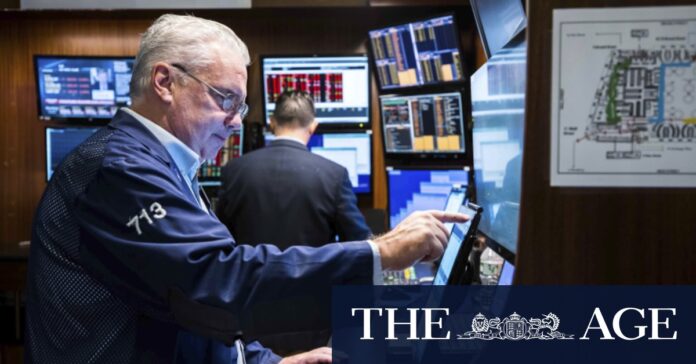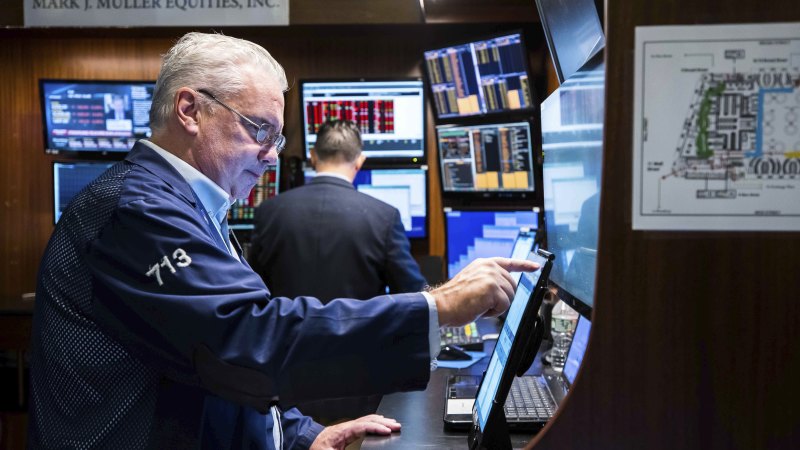[ad_1]
The S&P 500 rose 0.6 per cent and is just 0.6 per cent shy of its record set nearly two years ago. The Dow Jones Industrial Average gained 251 points, or 0.7 per cent, and set its own record for a fifth straight day, while the Nasdaq composite climbed 0.7 per cent.
Enphase Energy jumped 9.1 per cent for the biggest gain in the S&P 500 after the maker of microinverters for the solar industry told employees it will cut 10 per cent of its global workforce and make other streamlining changes. Stocks of oil-and-gas companies also pushed the market higher after crude prices recovered some of their sharp drops from recent months.
Loading
Around the world, stocks were mixed in mostly quiet trading. Japan was an exception, and the Nikkei 225 jumped 1.4 per cent after the Bank of Japan decided to keep its benchmark interest rate below zero and hold other policies steady in hopes of encouraging more borrowing and spending.
The S&P 500 has rallied more than 15 per cent since late October on hopes that a similar, easier approach to interest rates may soon be arriving on Wall Street.
With inflation down from its peak two summers ago and the economy still growing, the rising expectation is for the Federal Reserve in 2024 to pivot away from its campaign to hike interest rates dramatically.
Fed Chair Jerome Powell seemed to give a nod toward such hopes last week when he did not push forcefully against traders’ expectations for several cuts to rates next year. Wall Street loves lower rates because they give investment prices a boost and relax the pressure on the economy and the financial system.
The hope is the Fed can pull off what was earlier seen as a nearly impossible tightrope walk, by first getting inflation under control through high interest rates and then cutting rates before they push the economy into a recession.
A report on Tuesday showed the housing industry appears to be in stronger shape than expected. Homebuilders broke ground on many more homes in November than expected, roughly 200,000 more at a seasonally adjusted annualised rate.
Of course, Wall Street’s big recent moves also have critics saying the rally looks overdone and that stocks now appear expensive relative to how much profit companies are making. More cautious investors also say the number of rate cuts traders have penciled in for 2024 looks unlikely unless the US economy falls into a recession.
Some Fed officials have been sounding more cautious about the prospect for rate cuts since Powell’s comments last week. On Friday, for example, the president of the Federal Reserve Bank of New York said it was “premature to be even thinking” about whether to cut rates in March.
Markets have nevertheless been ebullient, with the S&P 500 coming off its seventh straight winning week for its longest such streak in six years.
Loading
Showing how ravenous investors have become, clients at Bank of America poured $US6.4 billion ($9.5 billion) more into US stocks last week than they withdrew. It’s the fourth-largest such inflow since the bank began tracking the data in 2008, strategist Jill Carey Hall said in a BofA Global Research report.
To Lori Calvasina, head of US equity strategy at RBC Capital Markets, the S&P 500 still looks reasonably valued given moderating inflation. But she also says the risk of a “short-term pause” for the market is rising given how much fervour has built up, with one survey of investor optimism well above its long-term-average, among other potential signals of caution.
In the bond market, the yield on the 10-year Treasury slipped to 3.92 per cent from 3.94 per cent late Monday. It was above 5 per cent in October, at its highest level since 2007 and putting tremendous downward pressure on the stock market.
AP
The Market Recap newsletter is a wrap of the day’s trading. Get it each weekday afternoon.
[ad_2]
Source link



